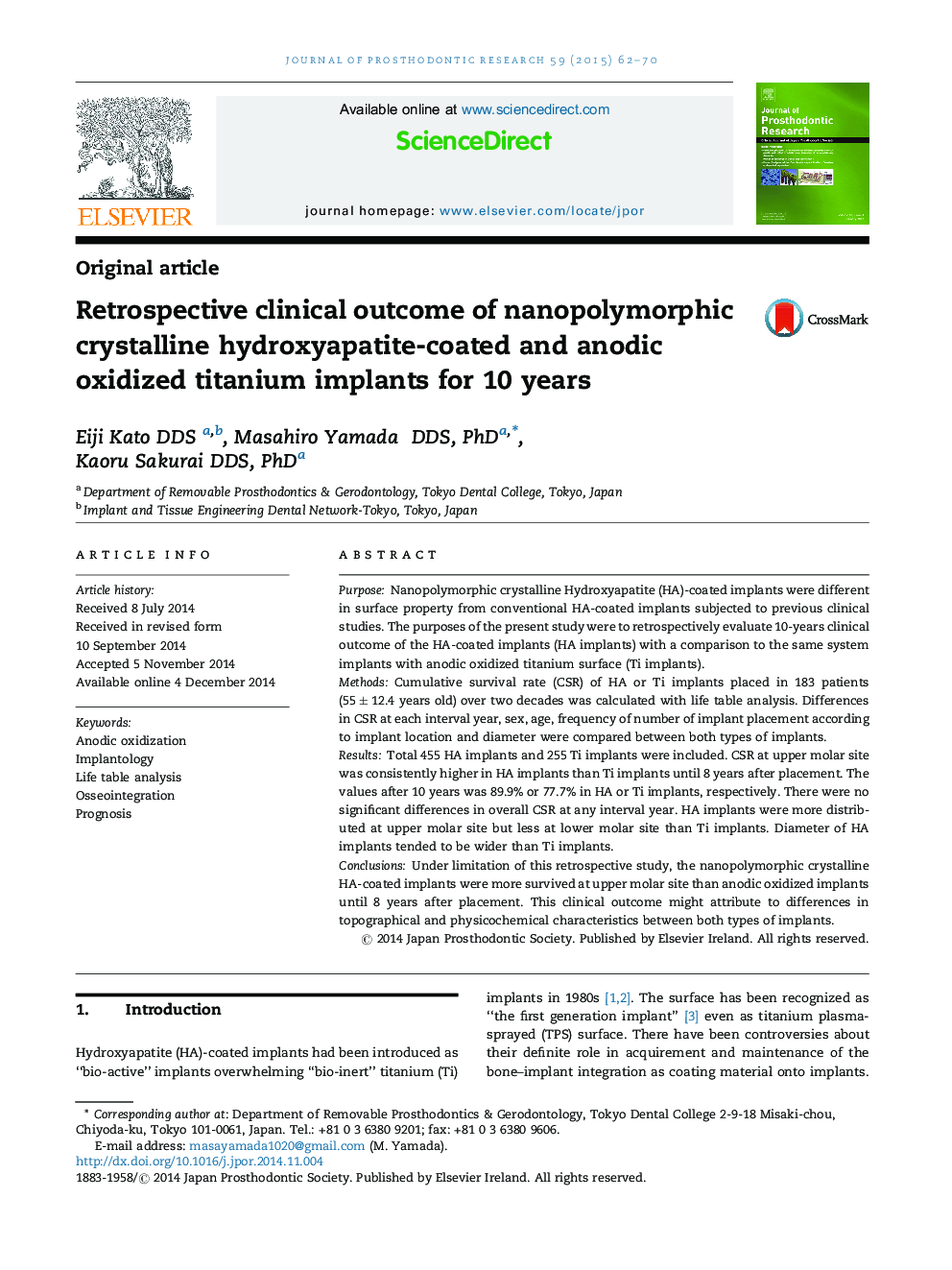| Article ID | Journal | Published Year | Pages | File Type |
|---|---|---|---|---|
| 3160675 | Journal of Prosthodontic Research | 2015 | 9 Pages |
PurposeNanopolymorphic crystalline Hydroxyapatite (HA)-coated implants were different in surface property from conventional HA-coated implants subjected to previous clinical studies. The purposes of the present study were to retrospectively evaluate 10-years clinical outcome of the HA-coated implants (HA implants) with a comparison to the same system implants with anodic oxidized titanium surface (Ti implants).MethodsCumulative survival rate (CSR) of HA or Ti implants placed in 183 patients (55 ± 12.4 years old) over two decades was calculated with life table analysis. Differences in CSR at each interval year, sex, age, frequency of number of implant placement according to implant location and diameter were compared between both types of implants.ResultsTotal 455 HA implants and 255 Ti implants were included. CSR at upper molar site was consistently higher in HA implants than Ti implants until 8 years after placement. The values after 10 years was 89.9% or 77.7% in HA or Ti implants, respectively. There were no significant differences in overall CSR at any interval year. HA implants were more distributed at upper molar site but less at lower molar site than Ti implants. Diameter of HA implants tended to be wider than Ti implants.ConclusionsUnder limitation of this retrospective study, the nanopolymorphic crystalline HA-coated implants were more survived at upper molar site than anodic oxidized implants until 8 years after placement. This clinical outcome might attribute to differences in topographical and physicochemical characteristics between both types of implants.
